Macramé is a sort of textile produced using knotting instead of weaving or knitting. Being an ancient technology predating the wheel and use of fire, knots are true artifacts of human ingenuity. One of the earliest recorded uses of macramé style knots as decoration is in the carvings of the ancient Babylonians and Assyrians. Today, this technique is revived by millennial and seems to be one of the hottest trends.
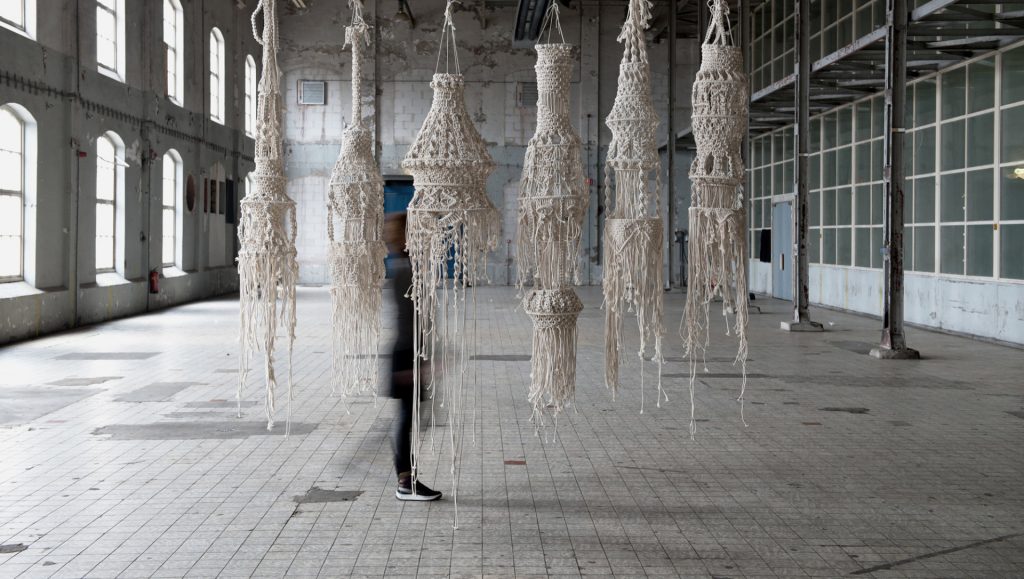
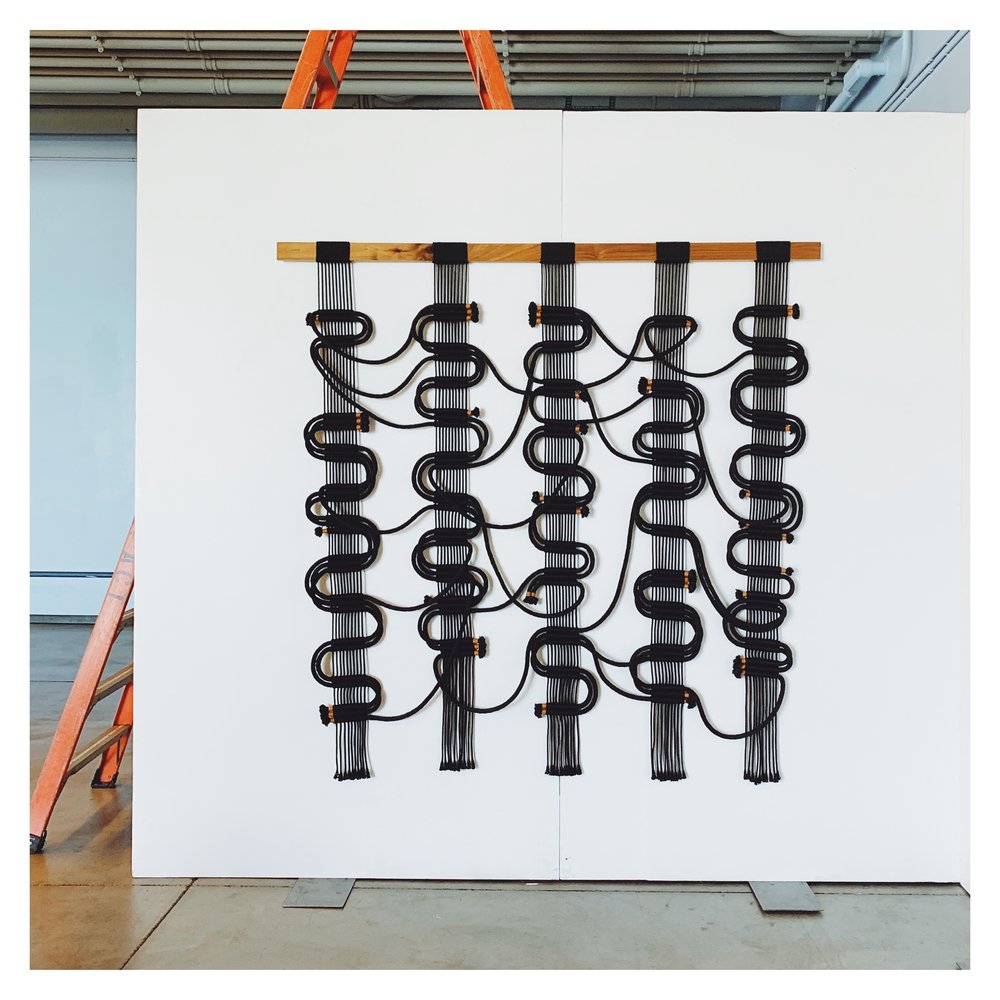
Circuit Boards by Windy Chien
Using macramé knotting, California-based artist Windy Chien creates minimalist, monochromatic rope sculptures and site-specific installations that let the observer to follow “the journey of the line.” In 2016, she made herself an assignment to learn a new knot —out of the almost 4,000 documented— every day for one year, creating The Year of Knots. She now uses this project as her ongoing palette for her artworks.
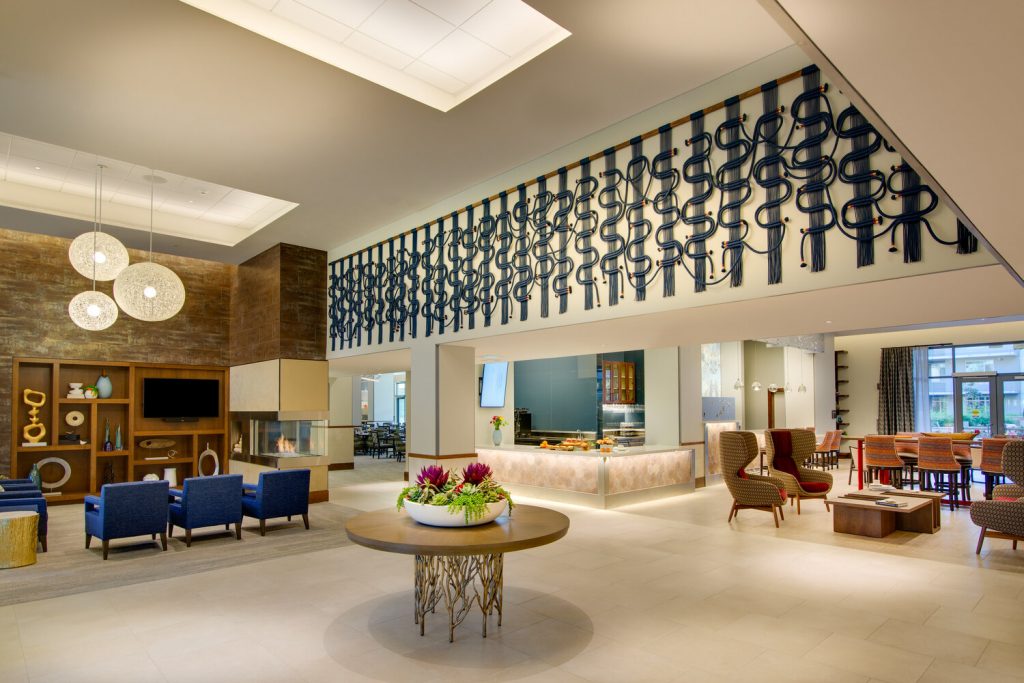

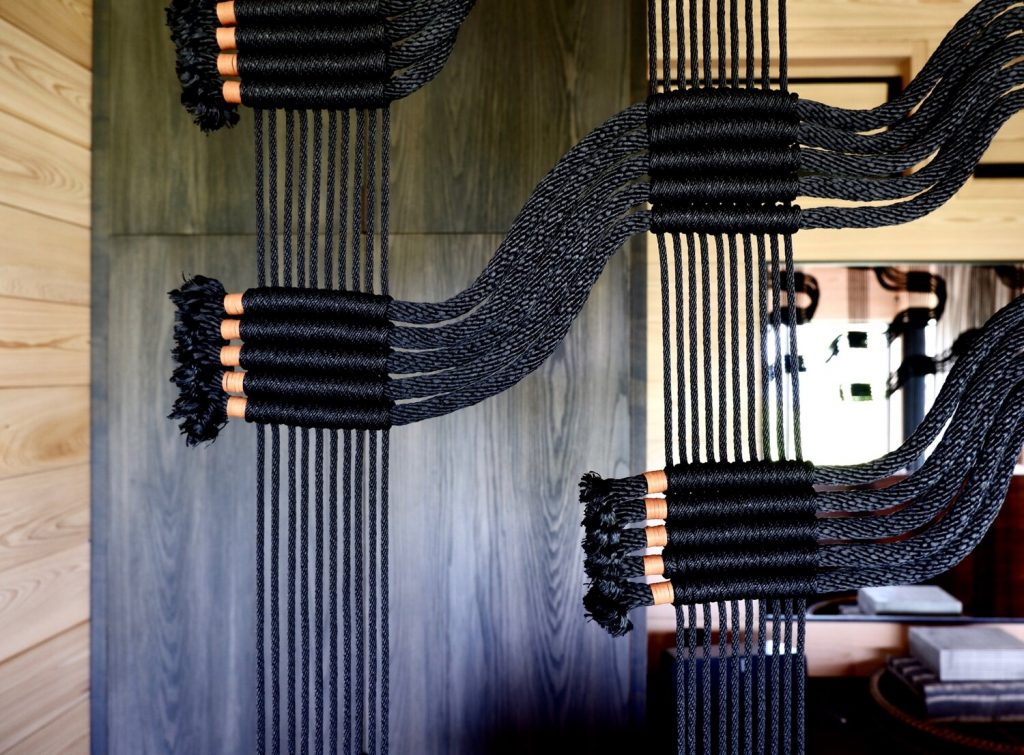
Circuit Boards by Windy Chien
Chien’s recent series of Circuit Boards comprise large wall hangings of winding rope with gold, red, and white thread that utilize pattern, repetition, and monumental scale to emphasize “the poetry of the line.” Spanning up to 24 feet, the fiber pieces resemble conductive pathways and tracks of electronic circuit boards and are equally informed by Massimo Vignelli’s 1972 redesign of the New York City subway map. According to the artist, the resulting works explore the tension between contrasting ideas: male-dominated fields of transit maps and electronics parts and the skill of macramé generally referred to as “women’s work”.
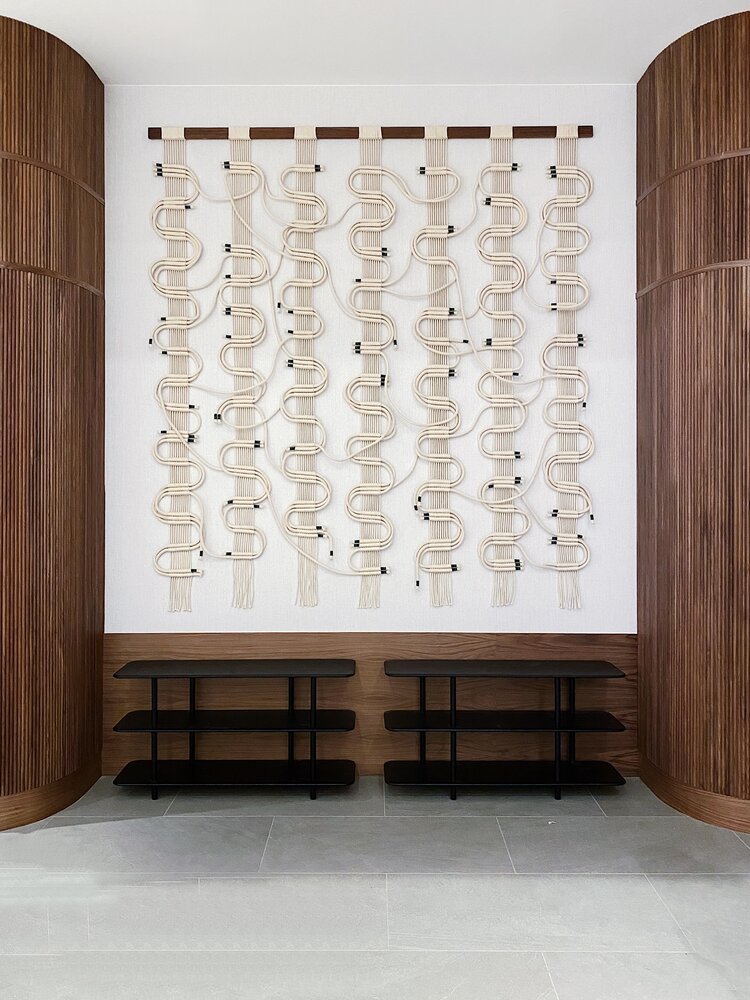
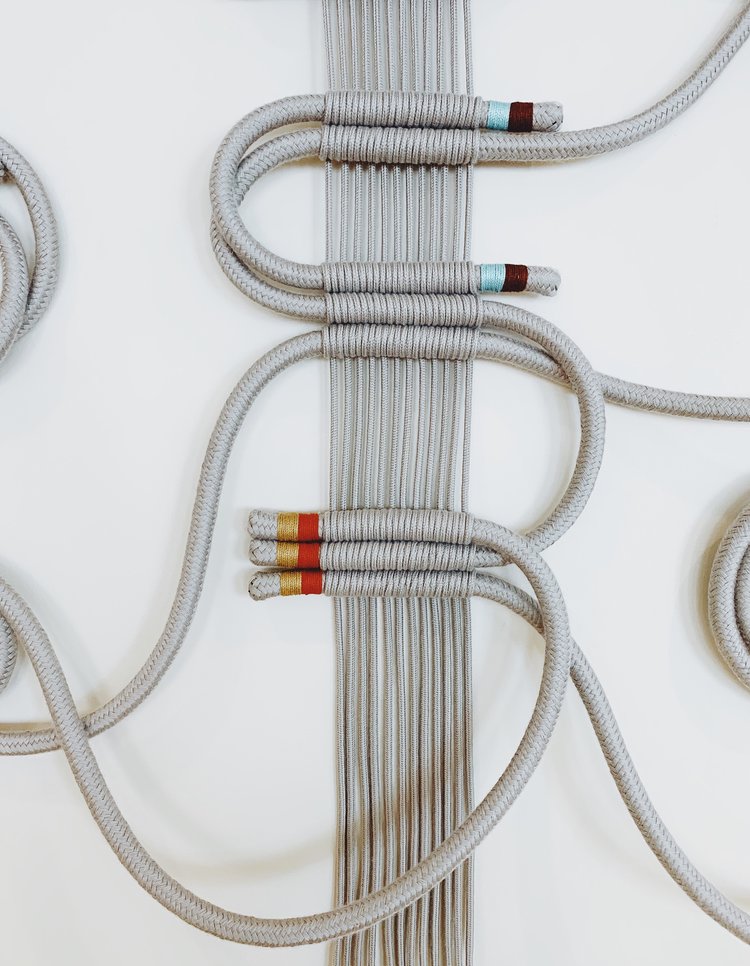

Circuit Boards by Windy Chien
Chien also seeks out unusual materials to highlight metaphor, such as frayed, soiled climbing ropes, decommissioned fire hoses, and seat belt webbing.

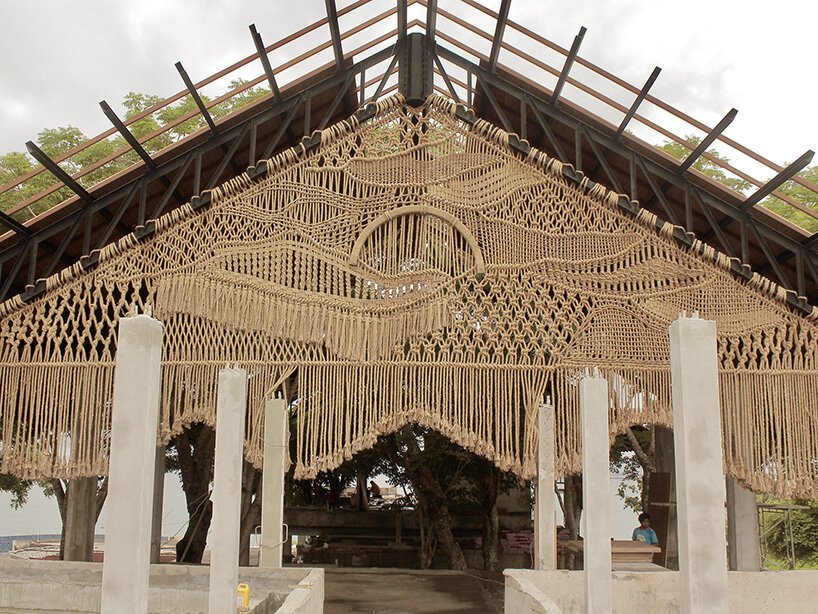
Mountain, Ocean and Sunset by Agnes Hansella
Scale is what makes the open-air macramé wall hanging by Jakarta-based fiber artist Agnes Hansella in Bali, Indonesia, really outstanding. Titled Mountain, Ocean and Sunset, the three handcrafted artworks are made using 16mm manila . The rope is cut with a hacksaw and balanced on scaffolding to assemble the massive work spanning more than 37 feet wide.
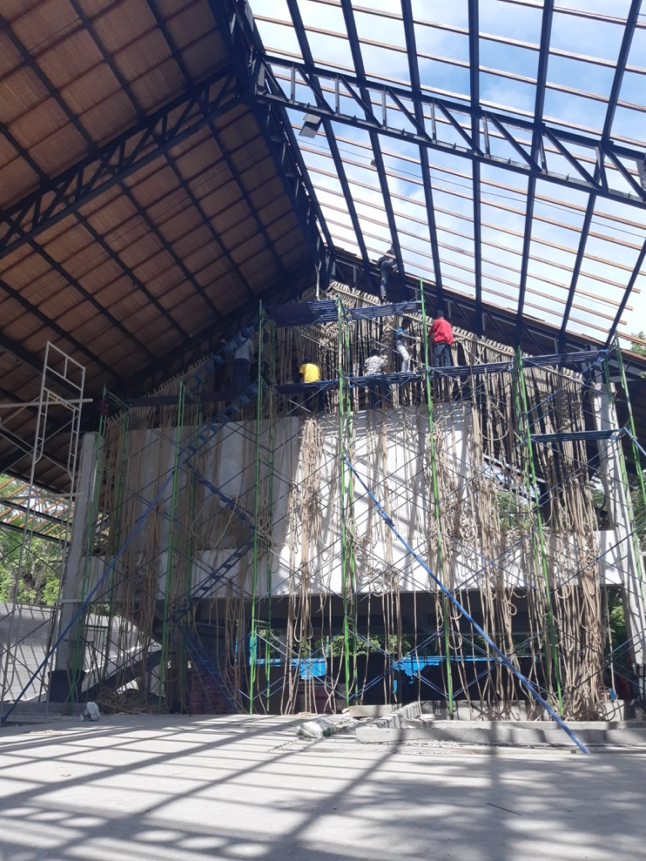
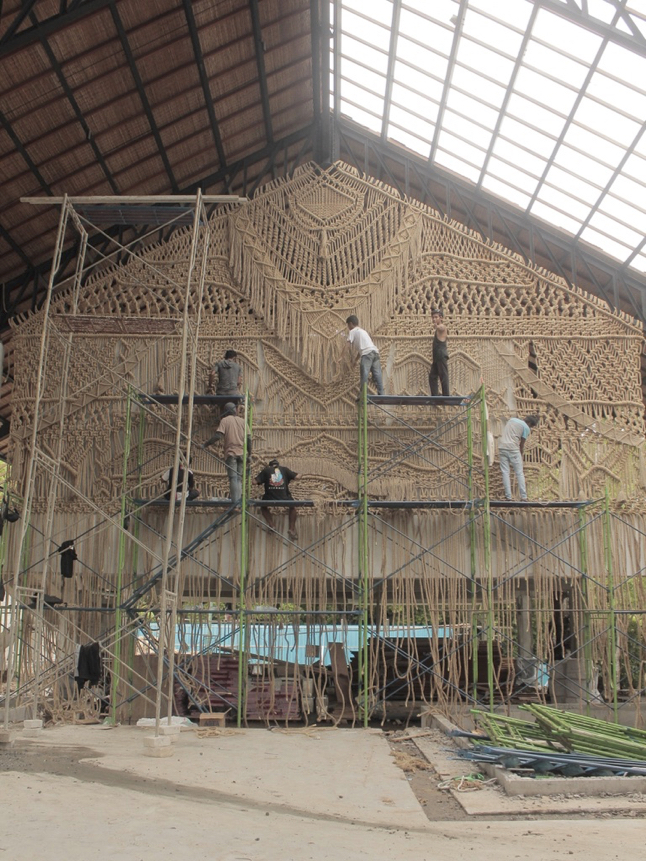
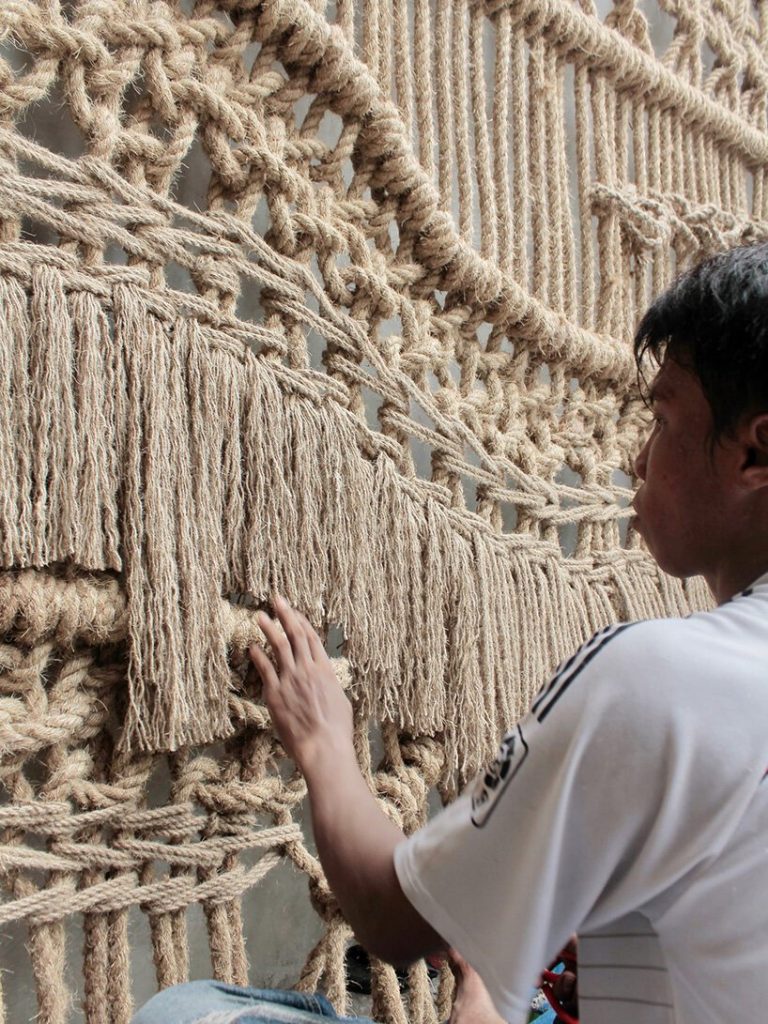

Mountain, Ocean and Sunset by Agnes Hansella
The artist describes the process as pure improvisation. Mostly, she comes up with her designs on site, based on her instinct and situation, as she creates her fringed fiber pieces that recall waves, corals and birds evoking the coastal surroundings of Jimbaran.
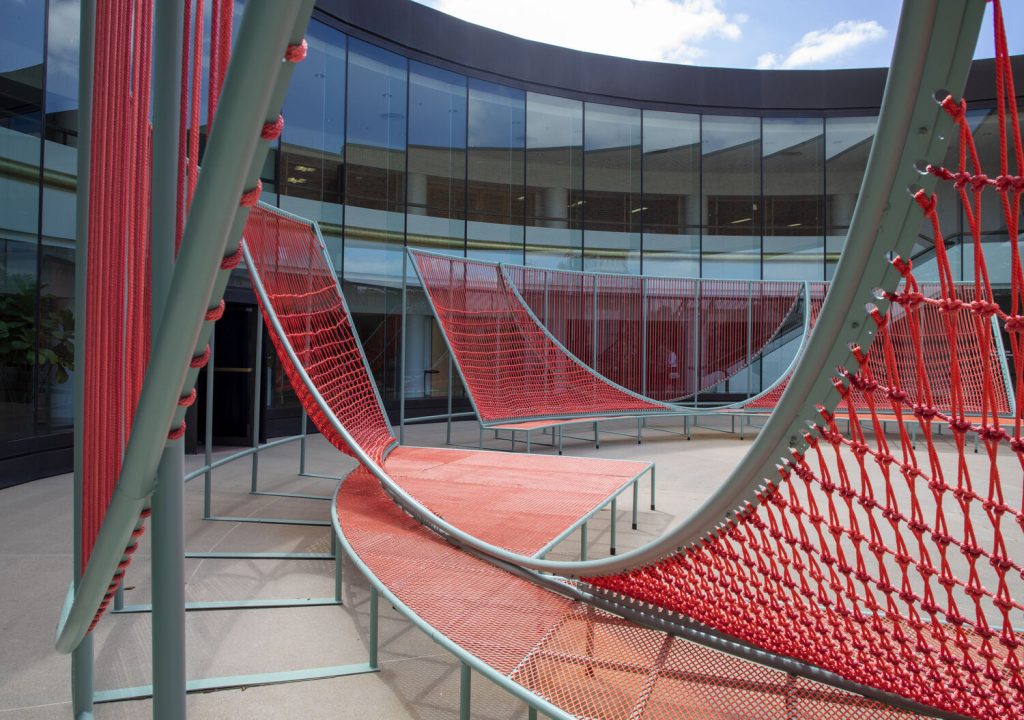
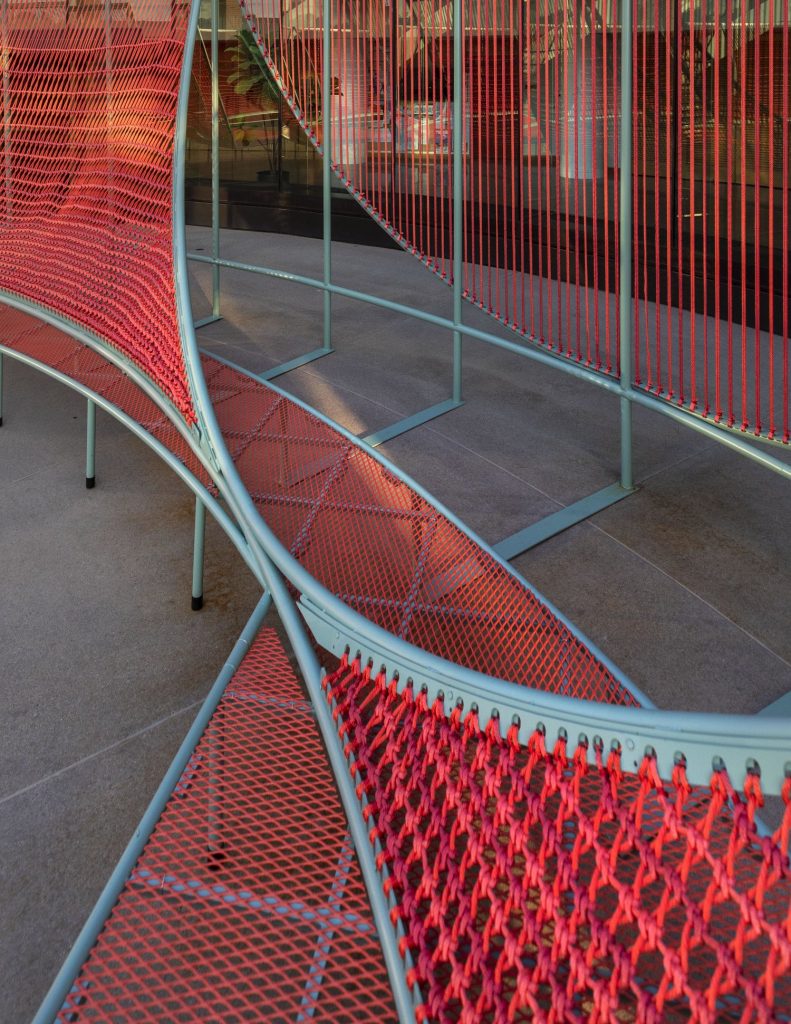
Soft Civic by Bryony Roberts Studio
New York based Bryony Roberts Studio has used macramé knotting to create Soft Civic, an installation that encourages playfulness and interaction at City Hall in Columbus, USA. Custom-fabricated structures with colourful woven surfaces are designed to activate the public spaces around the building’s main entrance as destinations for play, performance and participation.
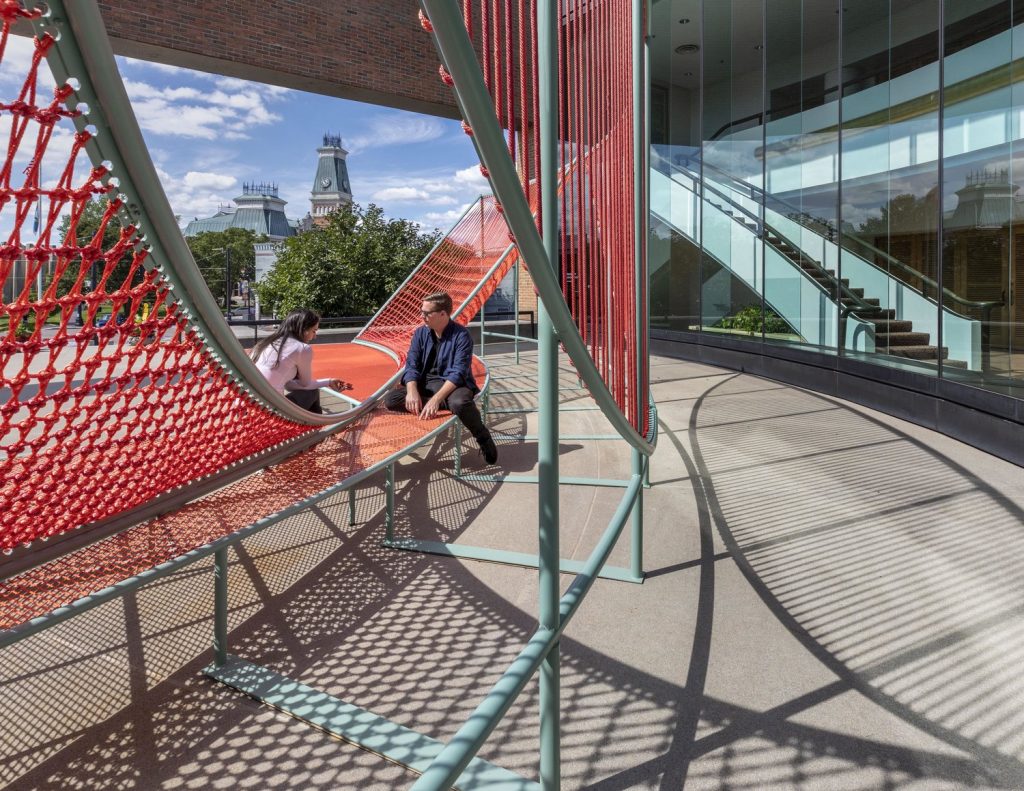
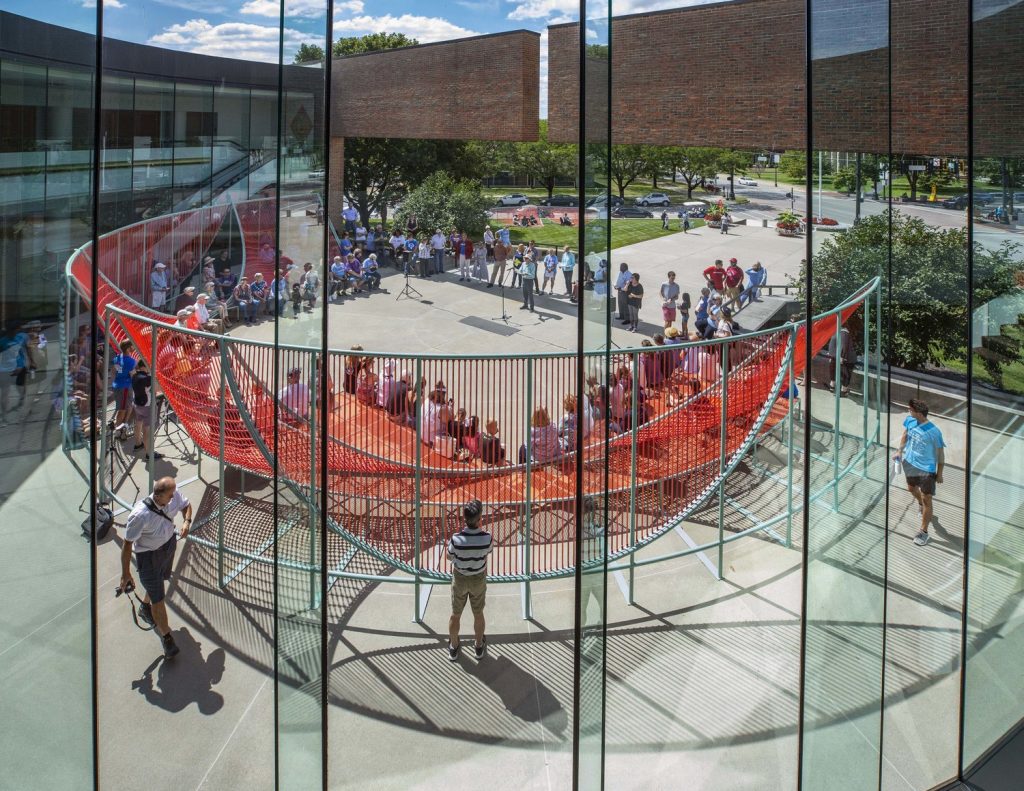
Soft Civic by Bryony Roberts Studio
Constructed out of nylon ropes and steel frames, the fiber panels bring textures of domestic space into the public sphere inviting the visitors to a range of impromptu activities, such as lunchtime lounging, seating for performances, or political meetings.
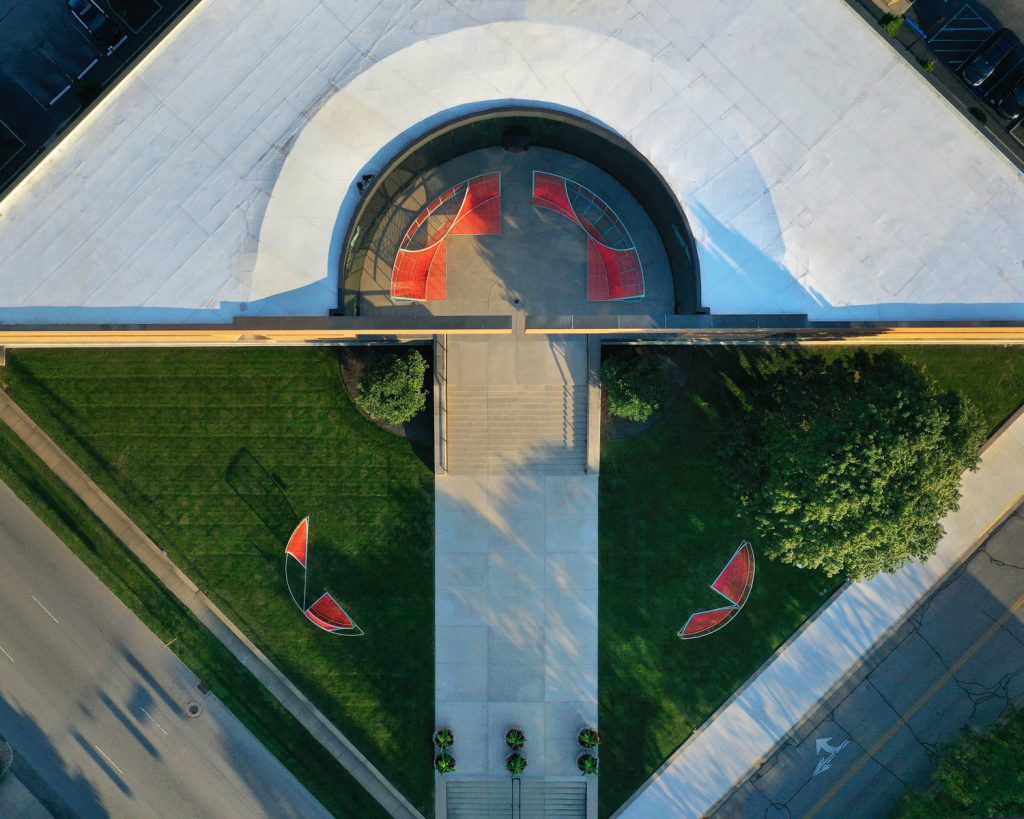
Soft Civic by Bryony Roberts Studio
Responding to the architecture of the City Hall building designed by Edward Charles Bassett in 1981, Soft Civic turns its geometry into soft, pliable structures, while the red-orange color of the rope echoes the brick of City Hall.

Soft Civic by Bryony Roberts Studio
The symbolical meaning of the knots used to create the woven seatings and platforms consist in representing a communal effort and political participation referring to the function of the original space.
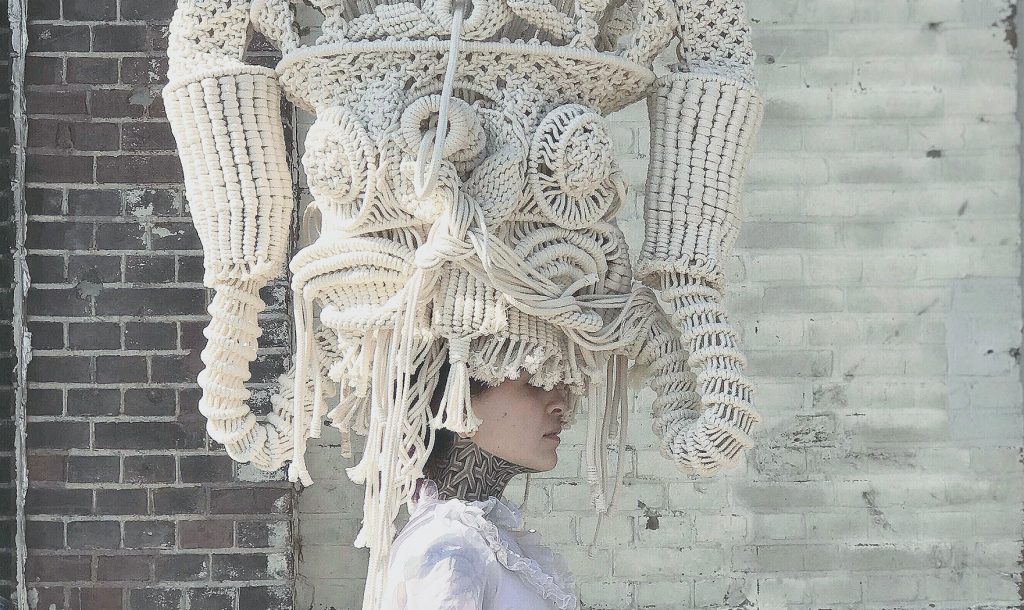
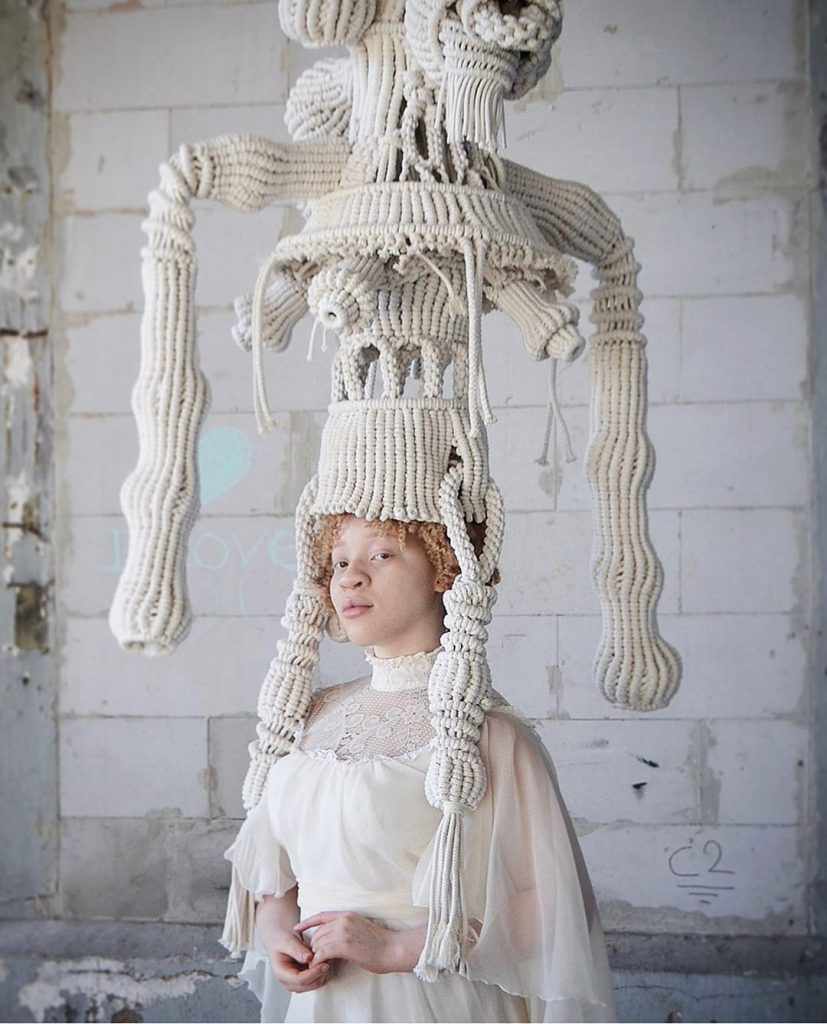
kNOTs collection by Sandra de Groot (also header image)
Macramé works that constitute kNOTs collection by Dutch artist Sandra de Groot of Atelier CHAOS are soft wearable sculptures that combine elements of craft, sculpture, and architecture. The elaborate headpieces and ornate armor-like tops are knotted by hand from high quality cotton rope, which allows the pieces to maintain their inherent structure and shape.
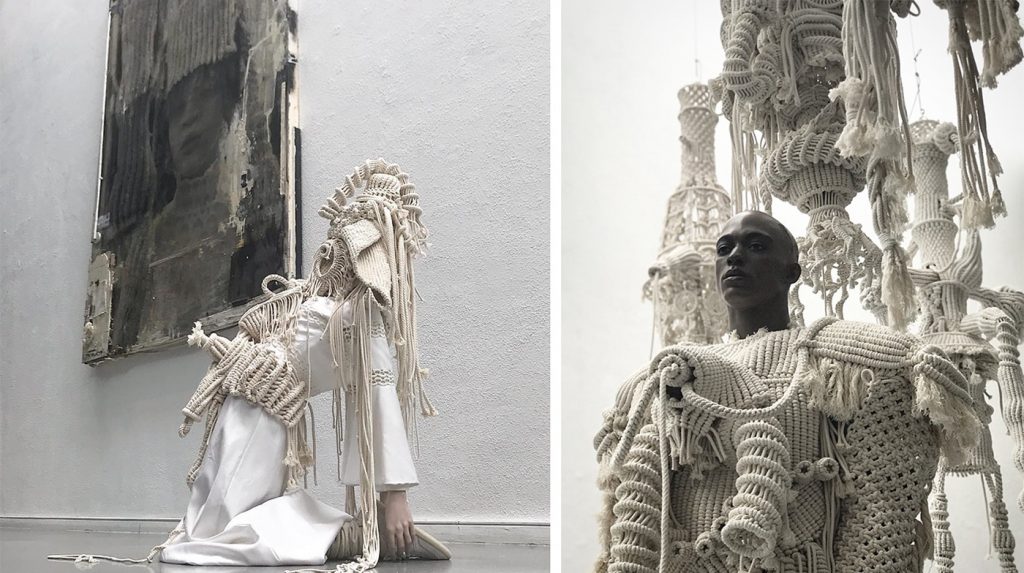
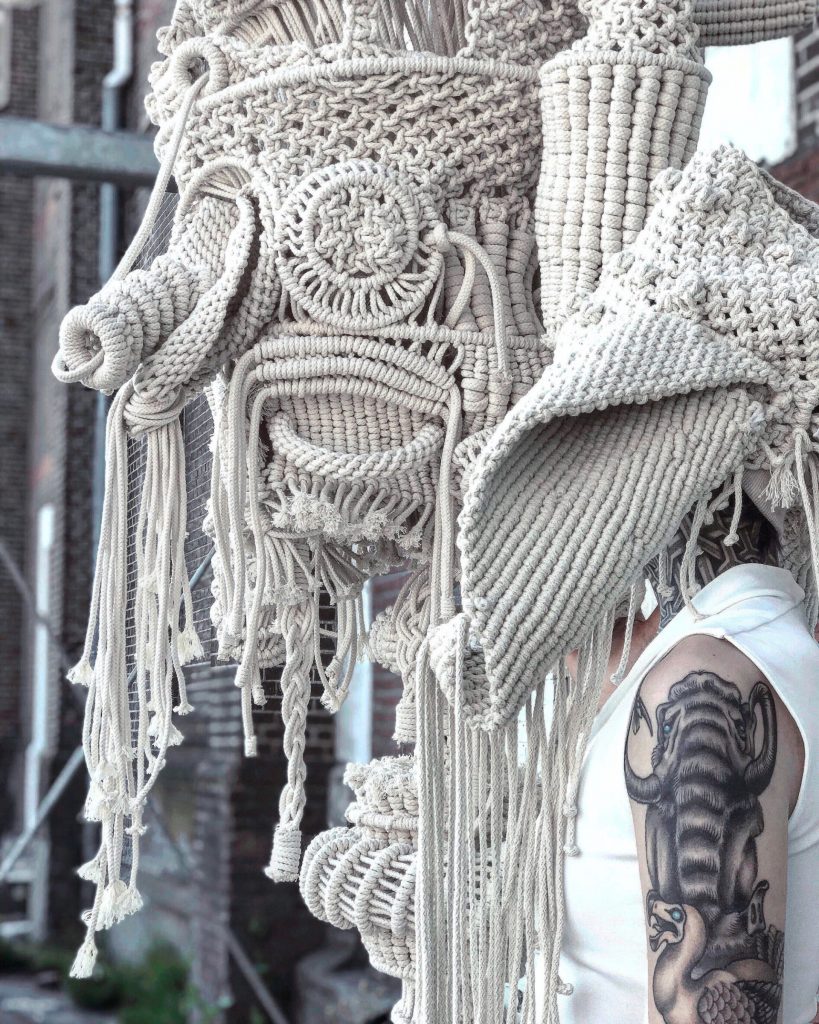
kNOTs collection by Sandra de Groot
De Groot began creating her macramé sculptures in the 1990s, hoping to raise questions about time, technique, and intensity.